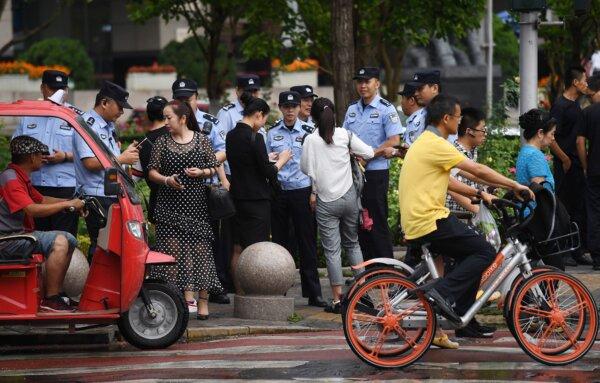Worker Strikes in China Remained High in 2024: Report
Observers say the real number of protests is much higher, as most information is blocked by the Chinese regime’s pervasive censorship apparatus.
The China Labor Bulletin (CLB), a Hong Kong-based human rights organization, has released their 2024 report on China’s worker strikes, reporting that the total number of labor protests across China remained high throughout the year and were more widespread.
The three provinces that saw the most strikes in 2024 were all in China’s coastal industrial areas, namely Guangdong with 346 cases, Shandong with 106 cases, and Zhejiang with 101 cases. However, the report also said that many labor protests also occurred in inland provinces, such as Henan (80 cases), Hebei (69 cases), and Shaanxi (59 cases).
The construction industry, consistent with prior years, saw the most protests, with 733 strikes accounting for 48.6 percent of the total cases. The manufacturing industry had 452 worker strikes, accounting for 30 percent. It was followed by the service sector, and then the transportation and logistics industries.
Han Dongfang, a Radio Free Asia (RFA) host who led the compilation of the CLB report, said that the recorded 1,509 strikes cannot fully reflect the real situation in China. This is “because the statistical method used to obtain clues about strikes was to collect information from social media posts,” he said, adding that each of the cases needs to be verified by CLB staff before being posted on CLB’s strike map.
Han said that there are definitely some strike incidents in China that were not included in the report, as “not everyone who organized collective actions posted them online.” In addition, CLB has limited staff, making it difficult to conduct comprehensive statistics, and it is difficult to obtain official data from China’s ruling communist party (CCP), he said.
Because of the CCP’s strict censorship, a lot of information on social media is quickly deleted or blocked, making it impossible for CLB to collect all the data, David Wu, a former rights lawyer in China who currently resides in the United States, told The Epoch Times on Jan. 31. There’s a significant gap between the recorded data and the real number of strikes happening in China, as “all their data is sourced from the Chinese social media,” he said.
Wu said he thinks there will be more and more strikes and social protests “because China’s economy is in a downturn, and a large number of companies are laying off employees.“ ”This is more in line with the social reality [in China],” he said.
Wu Te, an independent commentator on China’s workers’ rights situation noted that most of the strikes recorded by CLB “are simply asking for wages or economic compensation for factory relocation and layoffs, and a few involve labor treatment.”
He told The Epoch Times on Jan. 31 that many people expect an organization like the Polish Solidarity independent trade union, which brought down the communist regime in Poland, to emerge in China. “But it requires a high degree of political consensus among workers and strong organizational capabilities. At present, the Chinese workers’ movement still has a long way to go before this can be achieved,” he said.

Police check the identification of passersby as they search for petitioners near China’s Banking Regulatory Commission in Beijing on Aug. 6, 2018. Greg Baker/AFP via Getty Images
“One day, like the White Paper Revolution in 2022, everyone may stand up against the CCP’s dictatorship. So I think it’s entirely possible that strikes or protests will eventually turn into a revolution to overthrow the CCP,” he said.
“Because the CCP regime is indeed too evil and has committed countless crimes against the people, and is still harming the Chinese people.”
He said that the CCP regime is not only the enemy of the Chinese people, “but also the enemy of the democratic, civilized, and free world.”
He warned that as long as the CCP gains enough power and economic, military, and technological capability, “it will certainly extend its claws to other countries and harm people around the world.”
Luo Ya contributed to this report.





